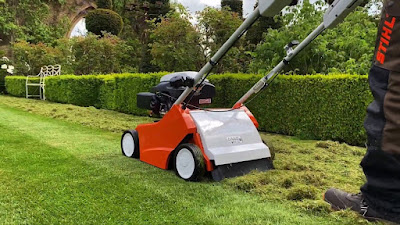3 Steps to Successfully Scarify Your Lawn
Have you ever looked at your lawn and thought, “What’s the deal with this grass?” It’s like your lawn has a second personality. One minute it’s green and healthy and the next it’s a sickly shade of yellow. No worries. That’s just the natural cycle of life. When your lawn is under the gun, you need a little help from above. The good news is that you don’t need any outside help to fix your lawn. It’s just a matter of getting the right tools, techniques, and knowledge. And yes, even with a sickly grass, that should not stop you from having a healthy lawn. You just need to know what you’re doing and do it right. With that, let’s take a look at the 3 steps you need to successfully scarify your lawn to maintain its health.
What is Scarification?
You’ve probably heard of aerating, which is a type of landscaping process that involves using machines to pull up the top layer of soil. This allows for better oxygenation and healthier roots. Scarification also has a similar idea but instead of just removing the top layer, it removes all the layers from your lawn. In essence, this process creates a much deeper “soil scar” than aeration. Aeration loosens up compacted soil and allows water and nutrients to reach the roots better. Aeration isn’t always enough though, as it doesn’t create any new root channels in your lawn. Scarification does this by creating essentially new soil for your grasses to grow into, which will give you a stronger, healthier lawn in no time.
What’s the best tool to scarify your lawn?
There are many tools that can help you scarify your lawn. The most common are a flat blade, a tiller or hoe, or just a heavy object like an axe or shovel. And before you go ahead and use your favorite tool, there’s something you need to know about the blades on these tools: 1) Flatter blades work better in tight spaces because they don’t leave as much dirt behind when they move; 2) For best results, use the right tool for the right space; 3) Any sharp-edged tool will do the job; however, it won’t be as thorough as a blade designed specifically for this task. The last two points are especially important when using any blade on a slope. Be careful when working with any of these tools in uneven terrain or on slopes. If you're not careful, then you might end up with an inconsistent surface and make the disease worse. So what tool should you use? Well, it all depends on what kind of terrain and area that you're working with for your yard. But let's say that there's one area in particular that is starting to head downhill fast - like patches of brown grass popping up all over the place. In this case, your best bet would be to scarify this area with a flat blade because it's easier to get into tight spaces and maneuver around corners without tearing up more grass than necessary and leaving too much dirt behind
Steps to Successfully Scarify Your Lawn
1. Pick the Right Tool The first step to successfully scarify your lawn is to pick the right tool. There are many different tools you can use for this, but people generally use a rake or a power edger. The second thing you need to do is prep your lawn by cutting away any clumps of weeds or moss. 2. Take Your Time The next step to scarifying your lawn is taking your time with it. You don’t want to spend too much time on one section of turf and neglect the rest, so make sure you divide your yard into sections and work on each one separately before moving onto another section. 3. Repeat Finally, once you’ve finished scarifying one section of your lawn, repeat the process for all other sections in that area of your yard until you have completed all areas of your garden or lawn. Then go back and finish off any spots that were missed in the beginning (like those pesky weeds).
Conclusion
Scarification is a process that removes thatch and encourages the breakdown of excess organic matter in the lawn. You can do this by hand with a rake, but a lawn scarifier is a good option if you have a lot of lawn to do or prefer to use power tools.
Related: Drainage Options of Machine

Comments
Post a Comment